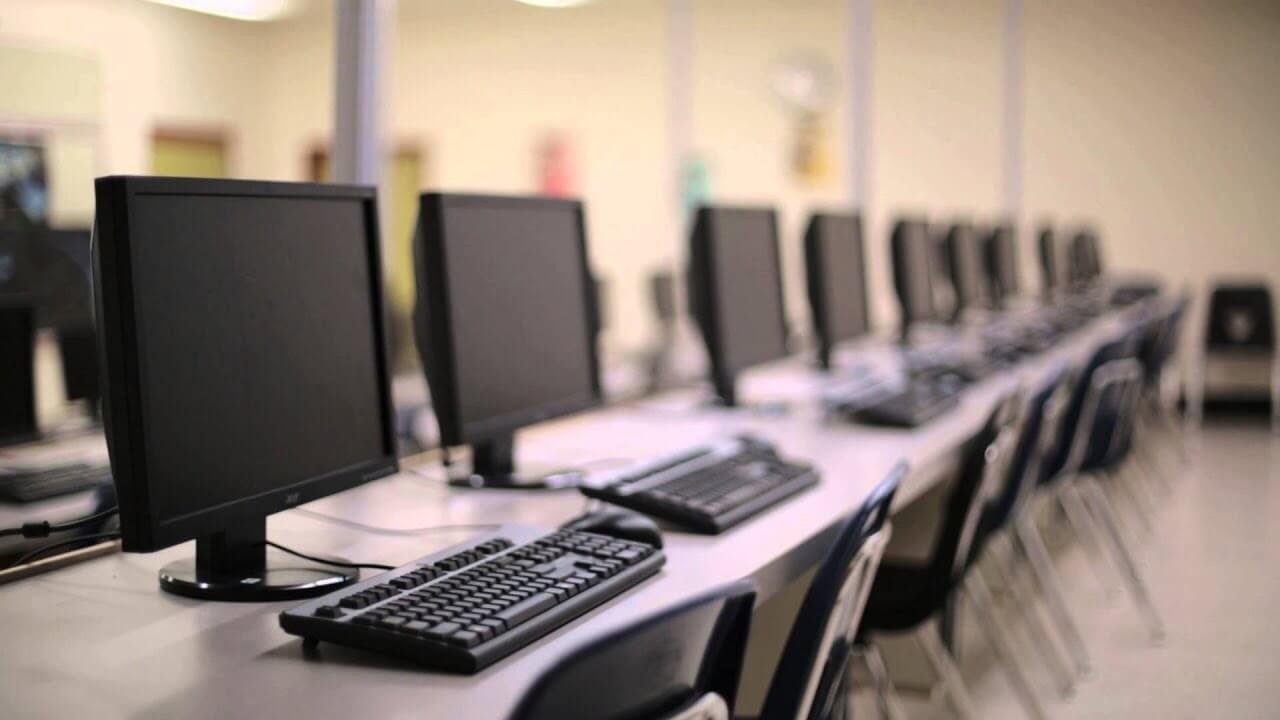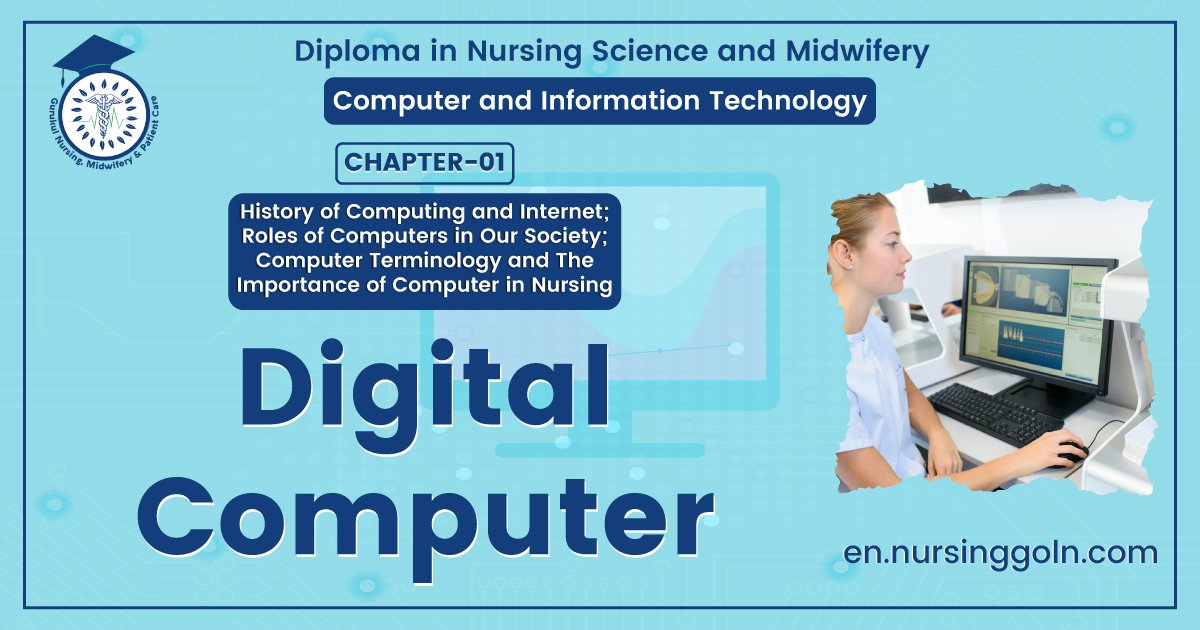Digital Computer – This book covers the entire syllabus of “Computer & Information Technology” prescribed by the BNMC for B.Sc. in Nursing Science & Diploma in Nursing Science & Midwifery students. We tried to accommodate the latest information and topics.
This book is an examination setup according to the teachers’ lectures and examination questions. We hope in touch with the book students’ knowledge will be upgraded and flourished. The unique way of presentation may make your reading of the book a pleasurable experience.
DIGITAL COMPUTER

Digital computer, any of a class of devices capable of solving problems by processing information in discrete form. It operates on data, including magnitudes, letters, and symbols, that are expressed in binary code-i.e., using only the two digits 0 and 1.
Or,
The computers which present physical quantities with the help of symbols or numbers and provide us discrete information are called digital computers.”
Examples:
- Digital watch, digital petrol stations and the computer, which we use nowadays, are the examples of digital computers
Characteristics of Digital Computer:
- Digital computers have two states on (0) and off (1).
- These computers are easy to use.
- Human being likes to use digital computers.
- These computers are reliable.
- Digital computers have big memory.
- Working speed of digital computers is slower as compared to analog computers.
- These computers are further divided into different categories such as personal computers,
- Mainframe computers and super computers.eup
Analog Computer

Definition of Analog/Analogue Computer:
An analog computer (spelt analogue in British English) is a form of computer that uses continuous physical phenomena such as electrical, mechanical, or hydraulic quantities to model the problem being solved.
Or,
“The computers which provide us continuous information are called analog computers.” Analog computers represent physical quantities in the form of waves or in continuous form.
Examples:
- Thermometer is the example of analog computers because it measures the length of a mercury column continuously.
- A traditional clock is the example of analog computers because the needle of clock covers the distance of dial continuously. Weight machine and Speedo meter are other examples of analog computers.
Characteristics of Analog Computer:
- These computers have no state
- The Speed of analog computer is fast
- These computers are not reliable
- These computers became the base for digital computers
- These computers are difficult to operate and use
- These computers are easy to develop
- These computers have small memory

Difference between Analog and Digital Computer:
| Traits | Analog Computer | Digital computer |
| 1. Definition | These computers provide us continuous information. | These computers provide us discrete information. |
| 2. Representation of quantities | These computers represent ami physical quantities in the form of waves or in continuous form. | These computers represent physical quantities with the help of symbols or numbers. |
| 3. State | These computers have no state. | These computers have two states On (0) and off (1). |
| 4. Use | These computers are difficult to use. | These computers are easy to use. |
| 5. Reliability | These are not reliable computers | These are reliable computers. |
| 6. Development | These computers are difficult to develop | These computers are easy to develop. |
| 7. Memory | These computers have small memory. | These computers have big memory. |
| 8. Base | These computers became the base for digital computers. | These computers were developed on the base of analog computers. |
| 9. Speed | These computers have slowlan speed. | These computers have fast speed. |
| 10. Example |
|
|
Advantages/Importance of Computer:
Advantages of Computers:
| High Speed |
|
| Accuracy |
|
| Storage Capability |
|
| Diligence |
|
| Versatility |
|
| Reliability |
|
| Automation |
|
| Reduction in Paper Work |
|
| Reduction in Cost |
|

Disadvantages of Computers
| No I.Q |
|
| Dependency |
|
| Environment |
|
| No Feeling |
|
Read more
